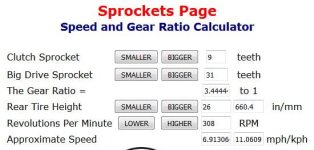docnjoj
1 GW
I can see the day that I need to use my trike in this fashion. I will raise the seat and cut down cornering speeds, but that should do it. The Mad Max is quite narrow at 28 inches between the front wheels.
otherDoc
otherDoc
Back in 08, I was unable to pedal more than a few minutes.dogman dan said:A low speed mobility trike is a good idea. or at least Jason thought so...
The key difference is the ability to pedal it, vs traditional power chairs. The rider can choose to get some exercise, however minimal. While I was sickest, I could pedal very little and would pedal some going out, then just throttle home. That ability to throttle home was crucial for me when I was that weak. But at the same time, the little bit of exercise was crucial for both my mental attitude, and physical recovery.

400% the battery use! ... ???ddk said:United brushed motors sans freewheel sux- completely losing coasting means 4x the battery use for the same distance traveled.
+ try pedaling against an unpowered geared 450W motor
location location locationDrkAngel said:400% the battery use! ... ???
...
My latest, as proposed, design is designed as a "pedal assist".
In other words, an electric eTrike with optional pedal assist. - Never intended or recommended for pedal only!
3 speed rear hub is the ideal replacement for the intermediate hub - gives L-M-H pedal speeds.ddk said:Schwinn meridian does have a jackshaft location where One can add "stuff"
Just metered the Unite gear reduction motors at 24V full speed no load.ddk said:Bottom line: I used 4x the battery to go across town with the non freewheeled trike.
DrkAngel said:Re-rigged a Forward reverse switch as a 24V to 48V shifter.
2 - 24V packs, "shifted" from parallel to serial .
Switch does disengage all power in "neutral" center position.
* Important to remove bus bar on left side between #2 and #5 for Serial Parallel

Available at - EBike Toolbox - Bargains! $

